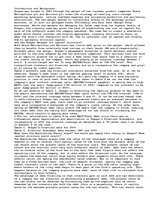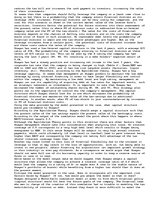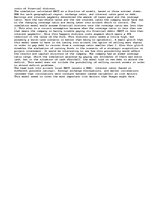Diageo designed a Monte-Carlo simulation model in order to find which financial policy (capital structure) would fit best the future goals of the company. The financial team who was in charge of the creation of this simulation had no trouble in modeling the tax deductibility of interest on debt. Instead they found it more difficult to model the costs of financial distress.
The simulation calculated EBIT as a fraction of assets, based on three unknown items: ROA for each geographical region, exchange rates, and interest rates paid on debt. Earnings and interest payments determined the amount of taxes paid and the coverage ratio. Here the tax-shield value and the new interest rates the company would have due to the changing coverage ratio are being taken into account which is correct. The simulation model would assume financial distress once the coverage ratio was less than 1. This also is a correct assumption because when the coverage ratio is less than one that means the company is having trouble paying its financial debts (EBIT is less than interest payments). Once this happens distress costs augment which means a 20% reduction in the value of the firm. This distress costs seems a little high, but assuming a worst-case scenario is better than being to optimistic. A small glitch that this model seems to have is not taking into account the option of selling more shares in order to pay debt to recover from a coverage ratio smaller than 1. Also this glitch disables the evaluation of raising funds in the scenario of a strategic acquisition or project investment. …



